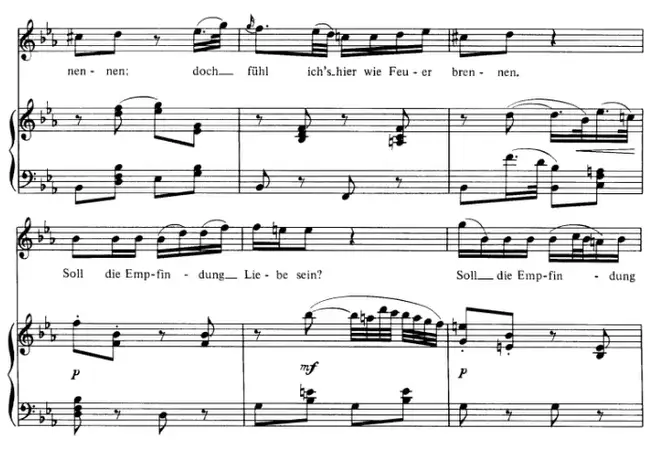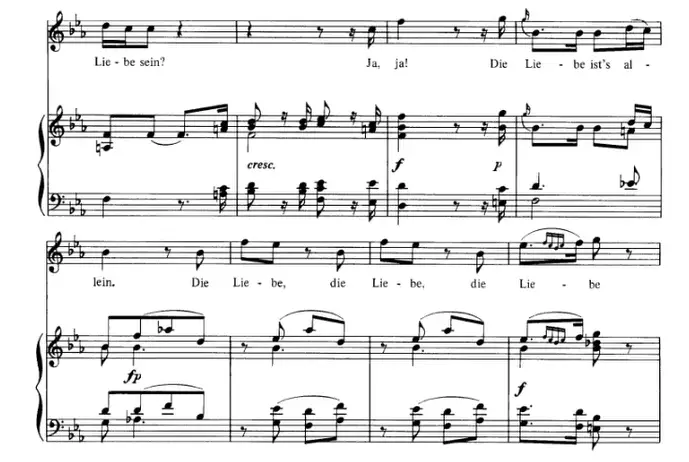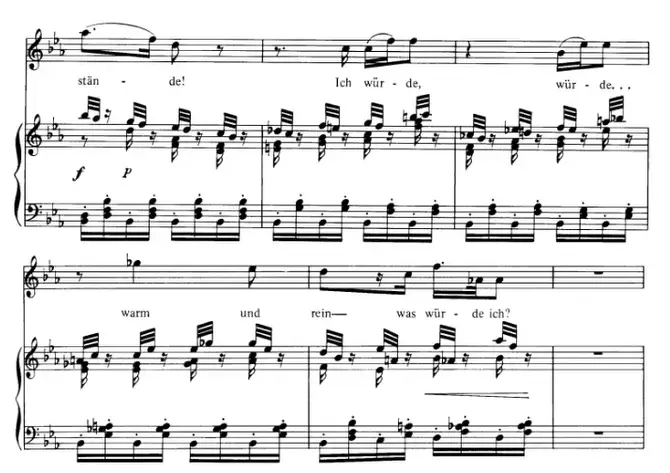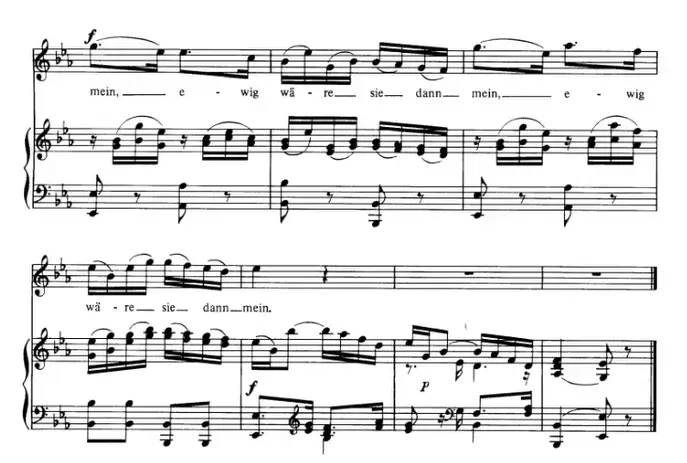The Portrait of Mozart’s Aria DIES BILDNIS IST BEZAUBERND SCHÖN
Read Interesting facts and hear great YouTube Videos about the famous Aria “DIES BILDNIS IST BEZAUBERND SCHÖN”.
If you want to hear more about the opera THE MAGIC FLUTE , click on the link to the opera portrait
The Aria – Synopsis & Background
This aria is written at a slow tempo. Composed in E-flat major, the key of love in the Magic Flute. Mozart did not make a show piece out of the great aria of Tamino. It demands a lyrical, tender voice that embodies a noble love, reservedly accompanied by the orchestra. Schikaneder, the librettist, wrote this aria in the form of a sonnet, the form of noble poems. Thus the aria contains many ornaments and emotions, which must be sung precisely:
Mozart and Schikaneder portray an insecure young man who experiences feelings of love for the first time. So Tamino asks twice «Soll die Empfindung Liebe sein?» (Can the feeling be love?) and before he pronounces the words with emphasis, the clarinet and bassoon already give him the answer. In the same rhythm Tamino sings “Ja, ja”:
Despite the serious formal arrangement of the aria, there is no lack of humour in this aria. Look at this passage where Mozart and Schikaneder let Pamino ask what he should do with the girl. Pamino, inexperienced with women, stammers twice “Was wurde ich? ” (What would I do ?). After a long pause, in which the singer and orchestra seem to puzzle feverishly, he gets the redeeming idea: a hug would probably be the right thing to do:
Mozart composes a beautiful conclusion to this aria. The movement “Und ewig wäre sie dann mein” (And forever then she would be mine) is repeated 5 times in jubilation, each time composed differently:
The Aria – the text of DIES BILDNIS IST BEZAUBERND SCHÖN
Dies Bildnis ist bezaubernd schön,
Wie noch kein Auge je gesehn!
Ich fühl es, wie dies Götterbild
Mein Herz mit neuer Regung füllt.
Dies Etwas kann ich zwar nicht nennen,
Doch fühl ich’s hier wie Feuer brennen.
Soll die Empfindung Liebe sein?
Ja, ja! Die Liebe ist’s allein!
O wenn ich sie nur finden könnte!
O wenn sie doch schon vor mir stände!
Ich würde – würde – warm und rein –
Was wurde ich? –
Ich würde sie voll Entzücken
An diesen heissen Busen drücken,
Und ewig wäre sie dann mein.
This portrait is enchantingly beautiful,
such as no eye has ever yet seen.
I feel the way this divine image
fills my heart with new emotion.
Though I cannot name what this is,
yet I feel it burning here like fire.
Might this sensation be love?
Yes, yes! It can only be love!
Oh, if only I could find her!
Oh, if she but stood before me now!
I should … should … warmly and virtuously …
What should I do? … Rapturously I should
press her to this ardent breast,
and then she would be mine for ever.
Written for a “lyric tenor”
The role of Pamino is written for a lyric tenor. The lyric tenor has a soft, melting voice. The voice must be rich and agile in melodic creation. He can reach the high notes with ease and create a beautiful sound. The lyrical tenor must be able to sing both intimate pieces and more exciting pieces convincingly.
Famous interpretations of DIES BILDNIS IST BEZAUBERND SCHÖN
For many people the name Wunderlich is synonymous with a role: Tamino in Mozart’s ‘The Magic Flute’. Much has been written about the premature death of this gifted singer. His achievement in Böhm’s complete recording is rightly regarded as unrivalled. Listen to this aria from this complete recording. His lyrical tenor is warm and rich and flows wonderfully. The second part is expressive and climbs effortlessly into the higher registers.
Dies Bildnis ist bezaubernd schön – Wunderlich (1)
Nicolai Gedda was a great Mozart singer. His Aria is perfect in diction but somewhat less passionate than Wunderlich’s version.
Dies Bildnis ist bezaubernd schön – Gedda (2)
Peter Schreier, who was often regarded as the successor to Wunderlich, was an excellent Tamino. Listen to an expressive aria with beautiful lines.
Dies Bildnis ist bezaubernd schön – Schreier (3)
Like Fritz Wunderlich, Joseph Schmidt died early. However, with the tragic biography of a Jew in Central Europe during World War II. His interpretation draws a melancholic Tamino.
Dies Bildnis ist bezaubernd schön (4) – Schmidt
Next is a great interpretation of Placido Domingo. The interpretation stretches a beautiful bow and flows beautifully. The German is surprisingly good. Somewhat less beautiful are the high notes, which in comparison to Wunderlich sound somewhat pressed.
Dies Bildnis ist bezaubernd schön (5) – Domingo
Peter Lutz, opera-inside, the online opera guide to the Aria “DIES BILDNIS IST BEZAUBERND SCHÖN” from the opera Die Zauberflöte.








Leave a Reply
Want to join the discussion?Feel free to contribute!